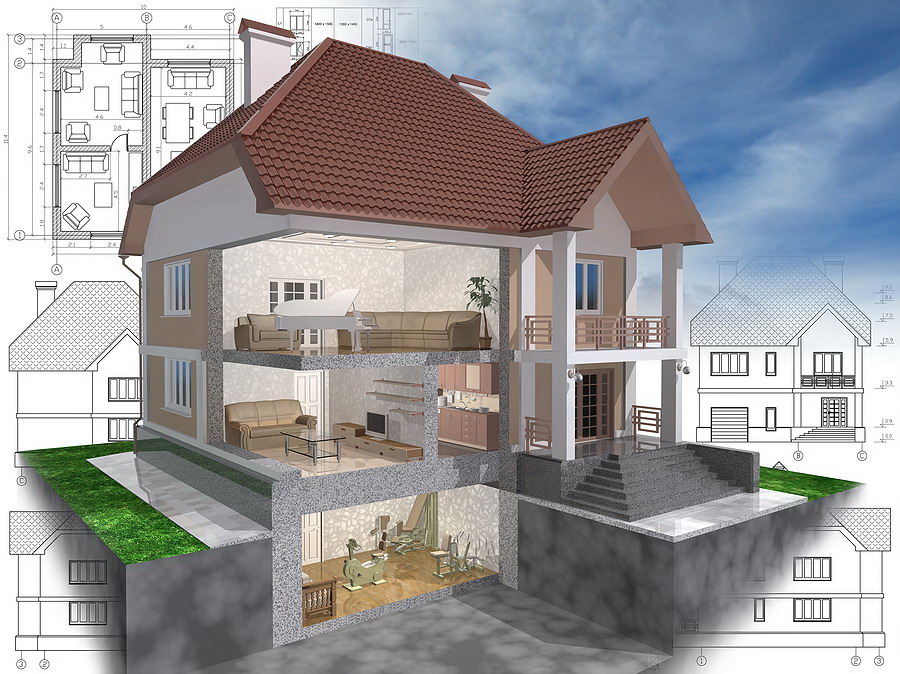Top Home Inspection Red Flags (and What They Mean for New Jersey Buyers)
Buying a home is one of the biggest financial commitments you’ll ever make — and a home inspection is your best defense against unexpected repairs and hidden structural issues. But not all findings are created equal. While many issues are minor and easy to fix, others are red flags that can signal serious defects or long-term costs.
At McFaulds Inspection Consultants, we’ve performed thousands of inspections across Ocean County, Monmouth County, and Forked River, NJ. Here are some of the most critical red flags every buyer should understand — and what to do if they show up on your inspection report.
1. Structural or Foundation Movement
Cracks in walls, sloping floors, or doors that don’t close properly can indicate foundation settlement or structural shifting. While small hairline cracks in drywall are often cosmetic, large horizontal cracks, stair-step cracks in block foundations, or significant floor unevenness may suggest movement or water intrusion.
Foundation repairs can range from minor sealing to major underpinning that costs tens of thousands. When structural concerns are found, buyers should always request evaluation by a licensed structural engineer before closing.
2. Roof Damage or End-of-Life Roofing
The roof protects the entire home — and its failure can lead to costly interior and framing damage. Missing shingles, curling edges, sagging rooflines, or widespread granule loss are common indicators that a roof is nearing the end of its life.
Inspectors often look for signs of active leaks, flashing deterioration, and water stains in attic spaces. Replacement can cost anywhere from $8,000 to $20,000 depending on materials and size, so understanding the roof’s condition is critical to negotiations.
3. Electrical Hazards or Outdated Panels
Outdated or unsafe electrical systems are among the most serious red flags we encounter. Panels such as Federal Pacific Electric (FPE) or Zinsco are known to have defective breakers that fail to trip, posing significant fire risk.
Other warning signs include double-tapped breakers, missing junction box covers, aluminum branch wiring, or evidence of overheating. Replacing an outdated or unsafe panel typically costs between $1,500 and $3,000 but ensures long-term safety and insurability.
4. Active Plumbing Leaks or Polybutylene Piping
Leaks around sinks, crawlspaces, and water heaters are clear signs of deterioration or high water pressure issues. Even slow drips can cause hidden wood rot or mold over time.
Homes built between 1978 and 1995 may have polybutylene (PB) piping — a flexible gray plastic material prone to sudden failure. Full replacement is often recommended, as insurers may refuse coverage for homes with PB plumbing.
5. Moisture or Mold in Crawlspaces and Basements
Excessive moisture is one of the most common — and most underestimated — problems found during inspections. Standing water, efflorescence (white powdery residue on foundation walls), or visible mold growth are signs of poor drainage, leaking pipes, or insufficient ventilation.
Encapsulation, sump pumps, and dehumidification systems are often necessary to protect wood framing and indoor air quality. Ignoring these conditions can lead to structural deterioration and costly remediation.
6. HVAC Systems at the End of Their Service Life
Older furnaces, boilers, and air conditioning units — particularly those over 15–20 years old — may still operate but are nearing failure. Signs of rust, noisy operation, or inconsistent temperature regulation indicate efficiency loss and potential breakdowns.
Buyers should always check serial numbers to verify equipment age and request service records. Replacement costs vary but often exceed $5,000 for complete systems, making this a significant budget consideration.
7. Poor Attic Insulation or Ventilation
An improperly ventilated attic can trap heat and moisture, leading to mold growth, shortened shingle life, and higher energy bills. Inspectors often find blocked soffit vents, missing insulation, or improperly vented bathroom fans exhausting into the attic instead of outdoors.
Improving insulation and airflow not only extends roof life but also reduces energy costs and improves indoor comfort year-round.
8. Drainage and Grading Problems
Water pooling around the foundation or sloping toward the house can cause serious long-term damage. Gutters that discharge too close to the foundation, compacted soil, or missing downspout extensions are all common contributors.
Simple corrections like regrading soil, adding downspout extensions, or installing French drains can prevent thousands in future foundation repairs or basement flooding.
9. Termite or Wood-Destroying Insect Activity
In New Jersey’s humid coastal environment, termites, carpenter ants, and wood-boring beetles are a constant threat. Evidence includes mud tubes, hollowed wood, and blistered paint on baseboards or framing.
Left untreated, infestations can compromise load-bearing structures. Annual termite inspections and preventative treatments are essential, especially in older or wood-frame homes.
10. Improper DIY Repairs or Unpermitted Work
Homeowners sometimes cut corners with DIY fixes or renovations that don’t meet code. Examples include open electrical splices, unsupported deck structures, or improperly vented plumbing systems.
These shortcuts can pose safety risks and create problems during resale or appraisal. Your inspector should flag signs of non-professional workmanship for further review by qualified contractors.
What to Do If You Find Red Flags During Your Inspection
Finding serious issues doesn’t mean you should walk away — but it does mean you need to make informed decisions. Here’s how:
- Ask Questions: Your inspector should clearly explain each concern, its severity, and recommended next steps.
- Request Quotes: Obtain repair estimates from licensed professionals for major issues like roofs, foundations, or HVAC systems.
- Negotiate with Knowledge: Use your inspection report to request repairs, credits, or price adjustments.
- Follow Up: For major safety or structural concerns, consider specialized inspections or engineering assessments before closing.
Protecting Your Investment with McFaulds Inspection Consultants
At McFaulds Inspection Consultants, our goal is to uncover hidden risks before they become financial burdens. Whether you’re buying in Toms River, Brick Township, Forked River, or anywhere in Ocean and Monmouth Counties, our experienced inspectors deliver detailed, photo-rich reports you can trust.
We take the time to explain every red flag, every safety item, and every repair recommendation — so you can make confident decisions about your new home.
Keywords: home inspection red flags, NJ home inspection deal breakers, Ocean County home inspections, Monmouth County home inspectors, inspection report issues, foundation problems, roofing issues NJ, McFaulds Inspection Consultants

